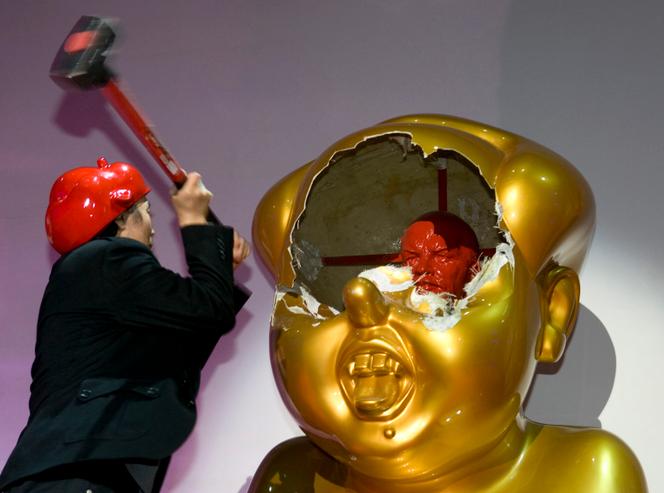


Among the most renowned of the Chinese artists to have emerged when China opened up to the world, the Gao brothers made their mark with their resolutely political work. News that Gao Zhen has been in detention since August 26 was confirmed by his younger brother Gao Qiang, who recently moved to the US. The public security bureau of Sanhe, a commune east of Beijing, informed the artist's wife the day after the arrest.
He was charged under a law passed in 2018 against denigrating the reputation and honor of heroes and martyrs. His lawyer was allowed to see him on Friday August 30. His studio was raided by police officers, who took photos of some of his work that included sculptures of Mao Zedong, which may be used as evidence against him in the accusation file. Gao Zhen, his wife and their son had been due to fly to the US a few days later, and it is unclear whether this played a part in in his arrest.
The brothers' family greatly suffered under the disastrous Maoist regime, which from the mid-1980s onwards has been the theme of much of the artists' joint work. Originally from Jinan, the capital of the coastal province of Shandong, they were just 6 and 12 years old when their father, in 1968 at the height of the Cultural Revolution, was accused of being a class enemy and thrown in jail. Twenty-five days later, his wife and six children were informed of his suicide, which they never believed. The family later travelled to Beijing to protest the injustice to the central authorities and eventually received a derisory sum in compensation.
Both brothers studied fine arts and went on to paint If Time Reversed, Memory 1989, a memorial of the bloody repression of the Tiananmen movement that occurred in the spring of 1989, which only strengthened their condemnation of the regime's crimes. Along with the famous Ai Weiwei, they belonged to a generation of committed artists who tried to push back against the limits of censorship and became mainstays of the 798 Art Zone, a complex of decommissioned military factories in northeast Beijing that were transformed into artists' studios at the beginning of the 2000s, which is when contemporary Chinese art started attracting international collectors. One of the Gao brothers' sculptures portrays police officers forcibly taking a prostitute away. Another features a number of naked individuals locked in wooden boxes, one on top of the other, representing China's straitjacketed society.
But they are obsessed with the figure of the Great Helmsman, the impact he had on the lives of an entire people and the forbidden truth. In 2006, they created Miss Mao, an ugly head caricaturing Minnie Mouse with the hairstyle and features of the People's Republic founder. Their 2009 bronze Execution of Christ consists of seven human-sized statues of Mao, six of whom hold the Son of God at gunpoint, while one standing behind them appears to be undecided. Inspired by Manet's Exécution de Maximilien (1868–1869), the work is undoubtedly their most emblematic.
You have 22.97% of this article left to read. The rest is for subscribers only.
